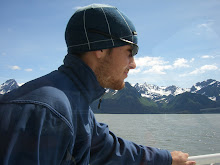I think there are a lot of people in the high angle rescue community who would like to more specifics about this. I hope they surface soon so that we can all learn something.
First off, I realize that any enclosed space rescue is difficult. If you add a high angle component it increases the complexity by quite a bit. Combined with a patient that is circling the drain fast and you have a rescue situation I hope I'm never placed in.
That being said, most rescues should be a "back to the basics" affair. I think it's unfair to say that "the equipment didn't fail, the rock did". The most basic part of your system is your anchor- it IS a part of your equipment in my eyes. If there are doubts you need to increase the redundancy until your safety factor (our team uses 10:1) is reached. If using man made anchors (bolts, cams, nuts, hexes, etc) then your suspicion should increase and so should the redundancy of your system. This often entails using many more anchor points than you would have otherwise to avoid a system failure. Why would you build a system that would put your patient's life in danger if one component failed?
My condolences to the patient's family and friends, along with the rescuers involved. Here's hoping we can all learn something...

No comments:
Post a Comment